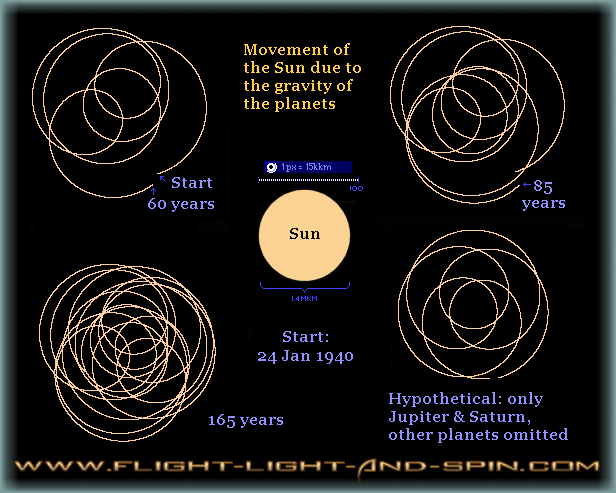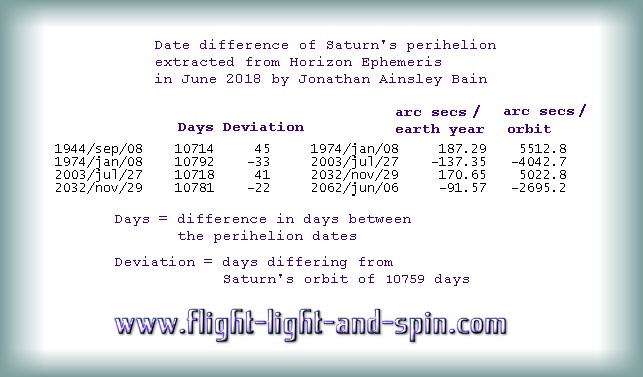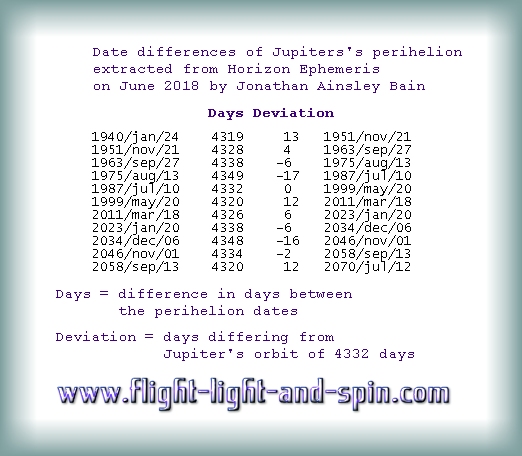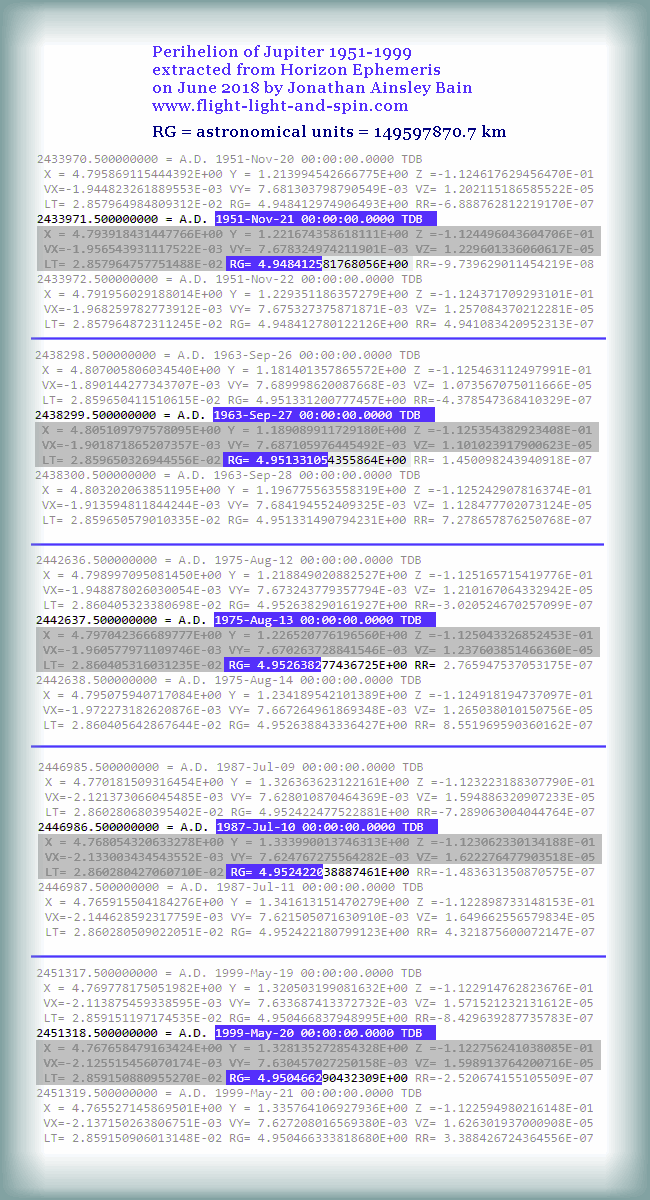Those images were generated by the OGS15 algorithm
(orbit-gravity-sim-15.exe). But not every cycle is identical,
and there is always an excess or a shortfall from any cycle.
After 85 years, the gravity and orbit of Uranus
realign the position of the Sun with Jupiter and Saturn. So
roughly, 1 orbit for Uranus is 3
orbits for Saturn and 7 for Jupiter. By the
same process, after 165 years Neptune's orbit
is mostly balanced. But it never perfectly balances.
When we include the orbit of the Earth and Venus and how that
effects the average, we need a cycle of 237
years, but when we include more precise ratios of Jupiter, Saturn
and Uranus the optimal average now becomes 913
years. If you observe the graphs in the section on Jupiter
and Saturn individually,
you will see the graphical proof from calculating fluctuations
to their aphelions, that the 913 year cycle
is clearly best. Thus a better ratio for their orbits is 31:77.
913 years is close to 11 orbits
for Uranus, and 1484 orbits of Venus. Mars
and Neptune however, are more optimally measured against a bit
more than double that amount at 1827 years.
But the 2:5 approximate ratio for Jupiter and
Saturn's orbit is still vital in appreciating the duality to
Saturn's orbit. Saturn's orbital duration varies by as much
as 6 Earth-days every second orbit due to the
influence of Jupiter. But fluctuations to its aphelion and perihelion
vary by well over a month! Saturn is also about 10 million
km different in distance to the Sun at it most and least extreme
individual aphelions, as well as similar fluctuations for perihelions.
There is a bit of a semantic issue here, because aphelion for
one single orbit is quite different to the overall aphelion,
but actually it is not possible to determine an overall amount
here, even over a 3000 year sample. This is
because Saturn's orbit is becoming less eccentric. Saturn's
aphelion is getting lower by an average of more than 2
million km every thousand years, and its perihelion is increasing
by similar margins. (Details are in a table in the section:
Saturn).
Thus giving an average for any orbital statistics is fairly
meaningless in an overall context. All such averages of orbits,
whether for duration, aphelion or perihelion, or any other parameter,
need to be placed in the proper context as to which
particular orbits are being averaged, dammit!
This issue on its own is a massive stumbling block to any such
study from a methodological perspective. In the section on Jupiter,
a detailed blow-by-blow account is presented of how vital it
is that orbital averages be placed in such an authentic context.
Saturn's perihelion movement is not a constant precession. Jupiter's
perihelion also precedes and recedes in cycles of 5
orbits, similar to Saturn's cycles of 2 orbits:
|
|









